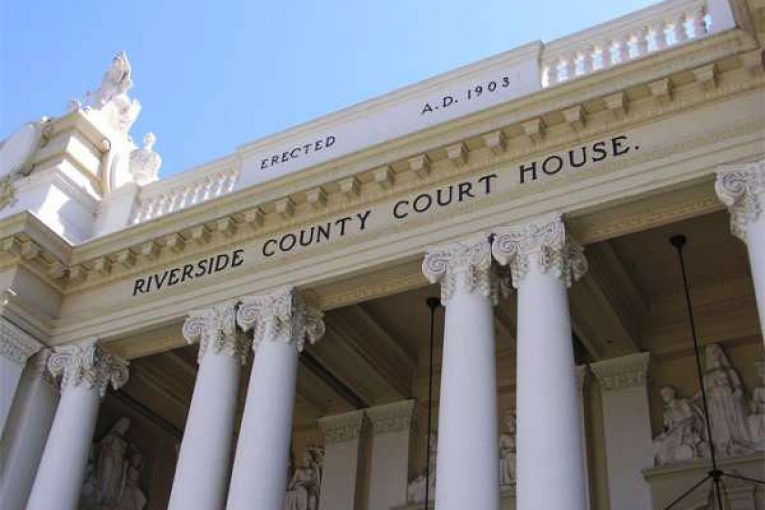
 By Naomi Cherone
By Naomi Cherone
RIVERSIDE — During a courtroom battle discussing what guidelines should be enforced by the vehicle section conduct codes, Christian Guadalupe Felix-Rivas’ case was found to be more complicated than expected.
Rather than putting into question Felix-Rivas’ credibility as the defendant, the proper discernment of the vehicle code section 22350 and 22351 remained was essential to the Judge Dean Benjamini’s agenda during this hearing.
As soon as Felix-Rivas’ matter had commenced, Judge Benjamini made it evident that he would be closely looking at what vehicle code(s) were violated, and if the terms of that specific code had in fact been infringed upon. This case was not about if Felix-Rivas had been going over the speed limit, but rather if his speeding had met the criterion established by the vehicle codes, thus meriting his detention.
The testimony and report of Officer Torres, the CHP officer that stopped and detained Felix-Rivas, had been the basis on which this questioning rested on.
Officer Torres had successfully completed the training academy, had undergone excessive training on radar reading, and recertified himself every year on visual estimations of vehicle speed. So, the courts were expected to have trusted his judgement on the call to pull over Felix-Rivas.
But Officer Torres incorrectly cited the wrong section of the vehicle conduct code when recanting what had occurred the night of Felix-Rivas’s stop—and this inaccurate citation did not go overlooked by the defense.
Felix-Rivas’ attorney pointed out how a wrongful cite could lessen the Officer Torres’s credibility and put into question whether the officer had correctly rationalized the ‘reasonable suspicion’ that led to Felix-Rivas’ detention.
Felix-Rivas’ attorney then called for the consideration of the California Penal Code section 1538.5 PC, which “authorizes a California criminal defendant to move for… the exclusion of any evidence that is the product of an unlawful search and seizure, and/or the return of any property that was illegally seized.”
Judge Benjamini responded to Felix-Rivas’ attorney by stating that the discretion had been in the hands of the officer; so, if the officer had considered there to be a reasonable suspicion to pull Felix-Rivas over, it was within his power to do so.
Following this statement, Judge Benjamini asserted that “[The officer’s] qualifications are not being put into question… I don’t think that is the issue before me… what specific vehicle proposition was being violated by going 50 mph… the officer citing the wrong vehicle section is irrelevant.”
Judge Benjamini was expecting that the presenting of evidence would abide by the qualifications of the vehicle code sections 22350 and 22351—either proving or disproving their violation on behalf of Felix-Rivas.
“As I am sitting here, I don’t think 22350 was violated… there are times that the speed is so high that there is no need for further questioning… but 25% over the speed limit is not necessarily reckless, unless there are circumstances that dictate that,” said Judge Benjamini.
Yet the court’s inability to interpret the exact qualifications of this code led to Judge Benjamini calling for a break that would allow for him to fully look over and understand the implications of the code.
After the thirty minute break, a better understanding of the codes were brought about, and Judge Benjamini started off by stating, “I’ve never been the best at deciphering the vehicle code, I don’t think anyone is… so if I am legally wrong then my ruling would be incorrect, and would be expecting it to be reversed.”
Based on the statutory framework that was agreed upon, it was brought to a consensus that vehicle code section 22350 would only be violated if there was excessive speeding, based on the signage indicating limits on the speed limit, referred to as the “basic speed law,” and would also have to have posed a danger to traffic, pedestrians or would infringe upon modified speed limits under extreme weather conditions.
Considering Officer Torres reported none of the conditions alluded to in code 22350 to be violated, besides the speeding violation, there was no discrete evidence or way of charging Felix-Rivas on that count. Therefore, solely based on the statute, Felix-Rivas would not have been found to have breached codes 22350 and 22351.
Judge Benjamini came to the determination that, “There is no evidence that the basic speed law was violated… not only is there a lack of evidence, but also affirmative evidence that [the codes were] not in fact violated.”
“Under 22351, Section B, there was no reasonable suspicion to detain [Felix-Rivas], therefore, the detention is not supported. All fruits of this detention and investigation are suppressed, and I am considering, under my discretion, the dismissal of this matter,” said the judge.
After the convoluted juggling of the vehicle codes, as they pertain to vehicle speed limit violations, the “evidence” was dismissed.
 Naomi Cherone is a writer for the LA Vanguard’s social justice desk. She is a San Diego native that is majoring in Sociology at UCLA, while planning on pursuing law in the near future.
Naomi Cherone is a writer for the LA Vanguard’s social justice desk. She is a San Diego native that is majoring in Sociology at UCLA, while planning on pursuing law in the near future.
To sign up for our new newsletter – Everyday Injustice – https://tinyurl.com/yyultcf9
Support our work – to become a sustaining at $5 – $10- $25 per month hit the link: